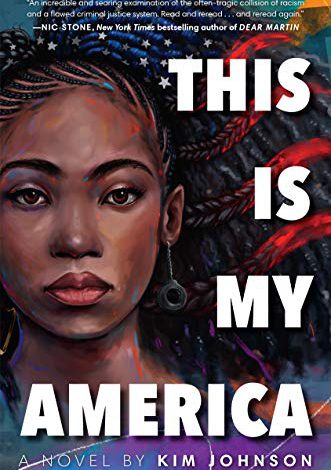 Kim Johnson’s debut young adult novel is a stunning work of realistic fiction. It joins the ranks of stories written by Angie Thomas, Jason Reynolds, and Jesmyn Ward. With This Is My America, Johnson uses art as a tool to inspire social action. Drawing on the idealism, perseverance, and passion of her protagonist Tracy Beaumont, Johnson encourages us to use our voices to demand justice and to become advocates for diversity, equity, and inclusion.
Kim Johnson’s debut young adult novel is a stunning work of realistic fiction. It joins the ranks of stories written by Angie Thomas, Jason Reynolds, and Jesmyn Ward. With This Is My America, Johnson uses art as a tool to inspire social action. Drawing on the idealism, perseverance, and passion of her protagonist Tracy Beaumont, Johnson encourages us to use our voices to demand justice and to become advocates for diversity, equity, and inclusion.
Rooted in United States history, where we have inherited a legacy of racial segregation and hate groups like the Ku Klux Klan, this narrative reminds us that the past is always present and that none of us is immune to the violence and terror of such a turbulent history.
Because Johnson’s agenda is to inform, grow hope, and incite action, the book touches on some tough topics. The decades of corruption and malpractice in Crowning Heights, Texas; the silence that makes a bystander complicit in hate crimes; and the truth that too often people are convicted in the court of public opinion–frequently without a full investigation and in the absence of critical thinking–are all subjects meant to open discussion. Other topics ripe for reform include the prison system where bodies mean dollars, giving those who profit an incentive to fabricate “facts” and create criminals. Another harsh truth is that “proving someone’s innocence stirs up trouble” (211) and that “the [legal] system works if you have the money to defend yourself” (17).
This story is one of both pain and possibility. Although James Beaumont has been on death row for six years and is up for execution in his seventh, Tracy has never given up on her father’s innocence. Her brother Jamal, now a senior in high school, is the number one track athlete in the state of Texas. Respectful, dedicated, charming, and logical, Jamal plans to major in communications and media. As a top scholar and star athlete, he is invited to be a guest on The Susan Touric Show.
When Tracy hijacks her brother’s interview on television, suggesting that “other suspects have been recently identified” (18) that will exonerate her father, proving his innocence, she sets in motion a chain of events. Although with her fabrication she was only hoping to catch the attention of Innocence X, a group that represents people wrongfully convicted and sentenced for crimes they didn’t commit, the consequences for her family turn more dire. Her brother becomes a suspect in a murder. Accused of killing Angela Herron, Jamal is on the run. Now, Tracy has two family members dependent on the legal system for justice–double the incentive to find evidence to free them both.
As readers confront the reality that the legal system gives some people a pass because of their names or racial identities while others become felons, we also develop empathy for those who become easy suspects or who live beyond the margins of privilege. We also come to know Black families—like the Ridges and the Beaumonts—who live in fear, always on high alert. As Tracy conducts her Know Your Rights workshops, she is candid about protection while being clear that pro-rights isn’t the same as anti-cops.
The journalism room is the one place that keeps Tracy surviving in school. It provides a place of comfort where she can use her voice to effect change. When Tracy begins her own investigation to determine what happened to Angela, she comes face-to-face with a ghoulish past that has spilled over into the present.
With this novel that explores racial injustice, Johnson gives readers hope that with our civic involvement and advocacy for change, we can build bridges of justice.
- Posted by Donna

